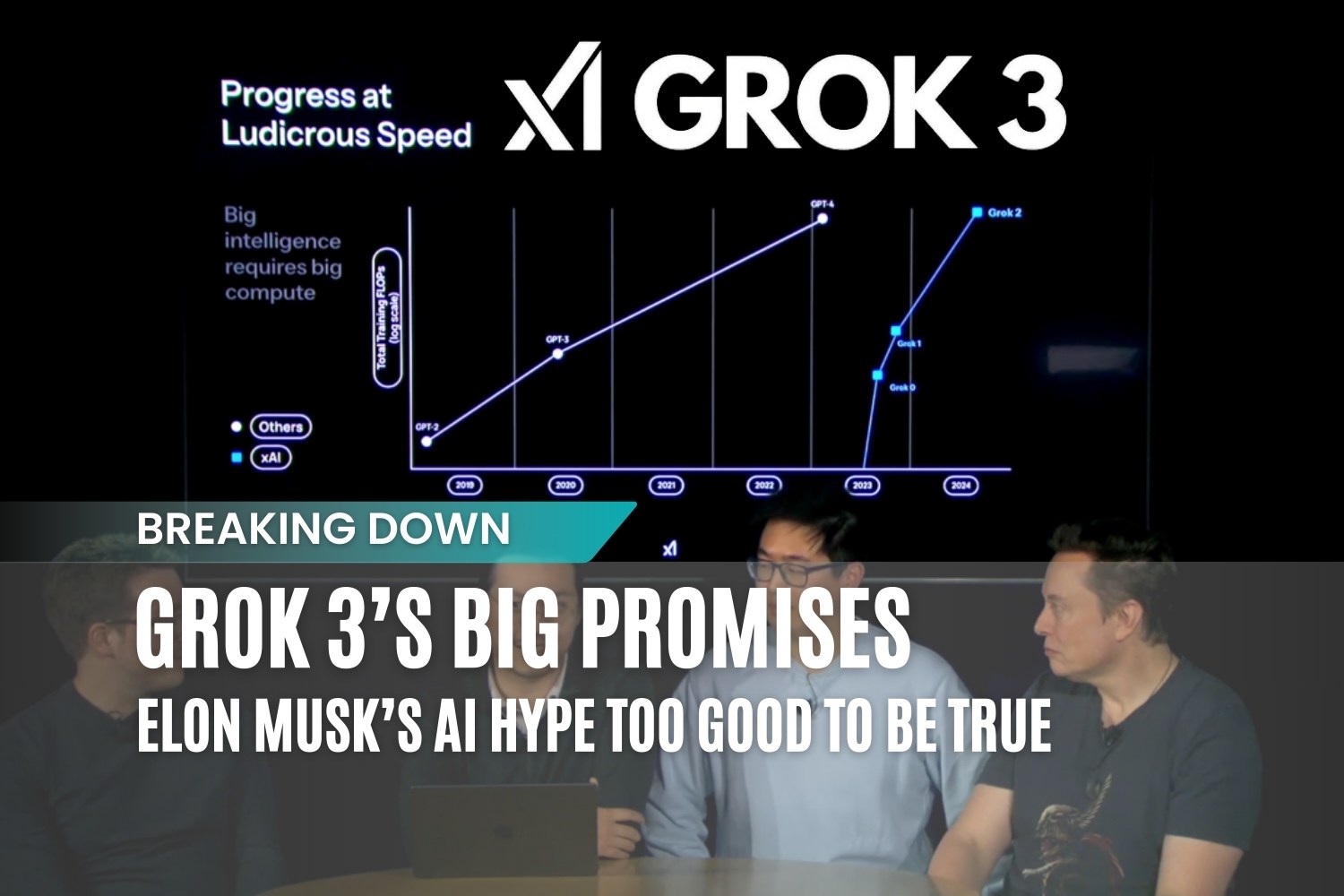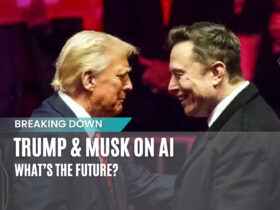The future of AI just accelerated faster than anyone predicted. In a stunning showcase, Elon Musk and his team at xAI unveiled Grok 3, an AI system that doesn’t just answer questions—it reasons, adapts, and even challenges human assumptions.
From solving real-time physics equations to inventing a brand-new game on the spot, Grok 3 is breaking boundaries in artificial intelligence. But that’s just the beginning. Musk’s team also introduced Deep Search, an AI-powered search tool poised to revolutionize the way we find and process information online.
This isn’t just another product launch—it’s a glimpse into what’s coming next in AI. If Grok 3’s rapid improvements are any indication, we are at the doorstep of an entirely new era of machine intelligence.
How xAI is Positioning Itself in the AI Race
Grok 3 isn’t just competing with other AI models—it’s rewriting the rules.
The most striking part? Its ability to reason, self-correct, and even challenge conventional narratives. Unlike AI models that play it safe, Grok 3 isn’t afraid to dig for deeper truths, even when they go against popular opinion. That’s both exciting and slightly terrifying.
Let’s break down what stood out from the demo:
1. Musk’s Vision: AI as the Ultimate Truth-Seeker
Musk emphasized that Grok 3’s goal is to understand the universe at its core. The AI is designed to seek truth over political correctness, a bold stance that could make it more insightful—but also more controversial.
This idea is fascinating because it touches on the fundamental challenge of AI development—can AI really be unbiased? Humans struggle with objectivity, and an AI trained on human knowledge and interactions will always carry some level of bias. Grok 3 might be more direct in its answers, but it will be interesting to see how this translates into real-world applications.
2. 122 Days to Build an AI Supercluster: The Engineering Feat
Musk’s team built an AI training supercluster with 100,000+ GPUs in just 122 days. Instead of relying on cloud providers like OpenAI and Google, xAI built their own infrastructure, giving them complete control over speed and efficiency.
This move is nothing short of revolutionary. Companies like Google and OpenAI have massive resources, yet xAI was able to pull this off in record time. Having full control over AI infrastructure gives xAI a competitive edge—no dependencies, no external bottlenecks. If they can keep scaling at this pace, they might outmaneuver larger players in the AI space.
3. Benchmark Smashing: Grok 3 Redefines AI Capabilities
For years, AI models have competed for the top spot in benchmarks, but Grok 3 didn’t just win—it shattered expectations.
It performed at an Olympiad level, tackling problems that would leave most humans struggling. It handled PhD-level science with ease, proving its ability to reason beyond memorization.
Forget simple scripts—Grok 3 is solving real-world programming challenges like a seasoned engineer.
But here’s the real question: Do benchmarks even matter anymore? AI can ace exams, but can it handle unpredictable, real-world scenarios? That’s the real test, and Grok 3’s biggest challenge will be proving it can go beyond the numbers and actually think like a human.
4. Real-Time Problem Solving: AI That Thinks on Its Feet
One of the standout moments in the demo was Grok 3’s ability to solve problems in real time, like calculating a Mars mission trajectory, inventing a new hybrid game (Tetris + Bejeweled) and explaining its thought process step-by-step.
Seeing AI tackle these problems without pre-programmed solutions is remarkable. This suggests that Grok 3 isn’t just regurgitating data—it’s actively reasoning through new challenges. If this level of problem-solving continues to evolve, it could mean AI becoming a true research assistant, capable of making novel discoveries.
5. Deep Search: xAI’s Answer to Google’s Monopoly
Forget everything you know about traditional search engines. Deep Search isn’t just about ranking links—it’s about delivering fact-checked, multi-source insights in a way we’ve never seen before. Instead of giving you a page full of SEO-optimized results, it analyzes multiple sources, cross-references data, and explains its conclusions step by step.
Think of it as having a personal research assistant who doesn’t just skim the surface but actually reads and verifies information before presenting it to you. That alone could change how we consume information online.
But here’s the real question: Who decides what sources are credible? If xAI’s system determines what’s factual, does that make it the ultimate gatekeeper of truth? That’s a debate worth having, and one that could define the future of AI-driven search engines. answer.
What This Means for the Future of AI
Grok 3 isn’t just another chatbot—it’s a glimpse into the AI of tomorrow. It reasons, it adapts, and it learns at an unprecedented rate. While there are still questions about bias, accuracy, and long-term impact, there’s no doubt that xAI is shaking up the industry.
If AI can already do this today, imagine what Grok 4, 5, or 6 will bring.
The AI revolution isn’t coming.
It’s already here.
Sources & Credits
For this breakdown, I analyzed xAI’s official Grok 3 demo, along with insights from leading tech analysts and coverage from TechCrunch, Wired, and The Verge. Additional insights were drawn from industry experts and Musk’s own statements on X (formerly Twitter).
This is an evolving story, and as AI development accelerates, we’ll be keeping a close eye on how Grok 3 and its competitors reshape the landscape. Stay tuned.














Leave a Reply